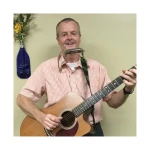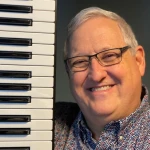As the executive director of Audiences Unlimited (AUI), I feel a great responsibility to bring the arts to unreached audiences.
One of the ways we accomplish that mission here at AUI is through our partnerships with long-term health care communities, where we contract with local performing artists to bring quality, live entertainment to older adults in residence. Our musicians are constantly sharing stories about the ways music touches these individuals in real and tangible ways.
But what about people who are aging at home? Thanks to advances in medicine and the wide availability of home health care services, many individuals are putting off the decision to enter retirement communities and are choosing to age at home instead.
While this decision might at first appear to offer more freedom, the opposite is usually true. These older adults actually experience fewer opportunities for meaningful engagement in the community. Many choose not to drive at night, limiting access to cultural connections, especially the arts.
These limitations are a great loss. Indeed, the arts provide opportunities for human expression and connections. Whether we’re attending a concert or creating art ourselves, engagement in the arts plays a vital role in our comfort, joy, sense of self-worth, and social interactions. In short, access to the arts contributes greatly to a high quality of life.
Isn’t a future including the arts one that we need to consider and embrace for all people? By shifting our focus from physical and mental decline to vitality and an expanded sense of self as we age, we open ourselves to the possibility of a future filled with growth, learning, and fulfillment.
Dr. Gene Cohen coined the term “creative aging,” where older adults engaging in creativity, in all its multifaceted forms, experience personal expression, brain development, and social engagement. Hence the call for our community to consider creative, lifetime arts opportunities for our older community members.
What would this look like on a practical level? Perhaps I can cast a vision, one that incorporates art activities in community centers and accessible venues that are open to all. It might take the form of a 6-8 week curriculum offered during the day, with adaptive opportunities to learn or improve skills in creating poetry, felt weaving, yarn art, watercolor painting, theatrical readings, or playing an instrument coupled with the joy of sharing the experience with others.
Such an approach could even include intergenerational programming, where the arts can open doors for storytelling. In this way, art can be a reflection of our seniors’ experiences and knowledge of history that they can share with family and friends.
In short, I am asking our community to embrace creative aging and lifetime arts, bringing creative opportunities to everyone and encouraging all to consider an active engagement in the arts.




